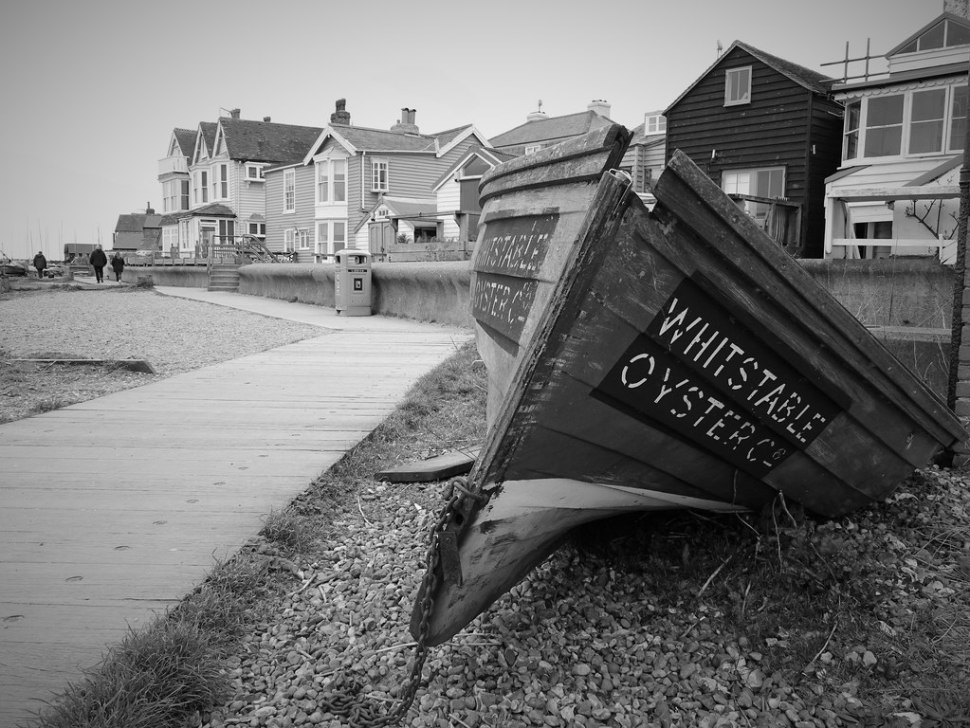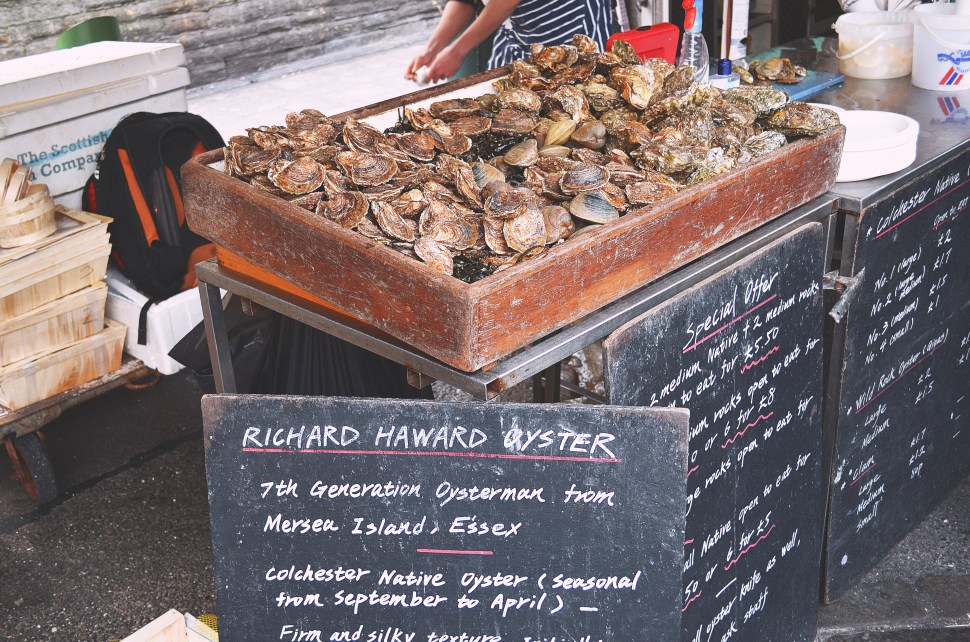This post introduces Alex Souchen’s recently published Environmental History article, “An Exceptional Mortality: Dumped Munitions, Inconclusive Science, and the Mass Death of Oysters in the Thames Estuary after the First World War.”
If you had asked me back in 2010, at the start of my PhD, if I’d ever publish anything on oysters in Britain, I would have responded with a snarky retort and a raised eyebrow: “you mean those small, rock things that make pearls and give people food poisoning? What do they have to do with war junk anyway?” It’s safe to say that as an aspiring historian studying munitions disposal in Canada, British oysters were about the furthest thing away from my mind as you could get.
Oh, how things change!
After completing my PhD at Western in 2016, I took up a SSHRC Postdoctoral Fellowship at the Laurier Centre for Military Strategic and Disarmament Studies, where I started researching a new project on the international and environmental history of disarmament and the ocean dumping of munitions in the twentieth century. It was then, while looking through records at The National Archives in Kew, that I came across some files describing a most peculiar event: in 1920 and 1921 an unusually severe oyster die-off occurred in the Thames Estuary and marine biologists were hired to investigate if the toxic and energetic properties of dumped munitions were responsible. Suddenly, those little rock things got interesting!

In the summer of 2016, I spent a few weeks in London and Kent collecting all of the archival sources I could find on this curious oyster die-off and its possible connections to dumped trinitrotoluene (TNT) and other high explosives. What I eventually found was a fascinating history of how an institutional memory was forged about the ecological impact of disarmament and munitions disposal at sea.
Far from being the arbiter of truth, science could not identify any cause for this “exceptional mortality” of oysters in the Thames Estuary. Alarmed by the unexplained collapse of their industry, oyster merchants remained indignant of the findings and believed that dumped munitions were at fault. However, government and military officials were skeptical because of dilution and the lack of concrete evidence. To them, something else – which the science had not detected – was responsible. In the end, they leveraged the inconclusive results to justify the continuance of dumping, reasoning that if they adhered to dilution thresholds then the water would dissipate the dangers. It was this belief that conditioned institutional memories about the environmental consequences of munitions dumping for the next forty years.

While writing this article, I learned some interesting facts about oysters. As things turn out, they are actually pretty cool, and the project opened my eyes to the complexities and interdependence of marine ecosystems. For instance, I quickly discovered that those small rock things have an important function in marine environments, and especially in brackish waters, or places where freshwater and saltwater converge. As stationary bottom-feeders, oysters rely on water currents for feeding which makes them a natural – and highly effective – filtration system: an adult oyster can filter about 50 gallons or roughly 190 liters of water per day! Furthermore, oysters and other mollusks can sequester contamination and fertilizer run off, though this turns them into carriers of pathogens, disease, and toxic substances. As a result, they’ve been at the centre of some longstanding legal and political battles in Britain and the United States over food regulations, public health, sewage outfalls, scientific research, water pollution, and conservation efforts.
“Oysters (and other shellfish) occupy a prominent place in the history of war junk and munitions disposal; they are the underwater equivalents of canaries in coal mines.”

In an interesting twist of fate, almost 100 years after scientists could not detect traces of TNT in oysters harvested from the Thames Estuary, a new generation of experts used blue mussels and better technology in Kolberger Heide in the Baltic Sea to show how widely TNT residues are spread when bombs are detonated underwater. Blast-in-place solutions are the cheapest and most direct mitigation strategy for underwater munitions, but as Edmund Maser and Jennifer S. Strehse found, the low order combustion and energy conversion of water-logged explosives is not total. Thus, the blast distributes the particles and marine organisms consume them in concerning concentrations.1
And so oysters (and other shellfish) occupy a prominent place in the history of war junk and munitions disposal; they are the underwater equivalents of canaries in coal mines. Shellfish and artillery shells: who would have thought they had anything in common? I certainly didn’t. But amazing things can happen when you let primary sources guide your curiosity, research, and writing: you end up in some unexpected places, talking about oysters.
Feature Image: “Whitstable beach front: A huge pile of discarded oyster shells 2” by Michael Garlick is licensed under CC BY-SA 2.0.
Notes:
- Edmund Maser and Jennifer S. Strehse, “‘Don’t Blast’: Blast-in-Place (BiP) Operations of Dumped World War Munitions in the Oceans Significantly Increase Hazards to the Environment and the Human Seafood Consumer,” Archives of Toxicology 94 (April, 2020): 1941-1953.
Latest posts by Alex Souchen (see all)
- Finding a Toxic History in the Archives - December 16, 2021
- Dumped Munitions, Inconclusive Science, and… Oysters? - September 13, 2021
- New Book – War Junk - April 20, 2020
- Underwater Munitions and the Pollution of Military Activities - January 30, 2020